Things to do in Tayrona National Park
Tayrona National Park is named after the Tairona people, the indigenous people of this area. This land has great cultural and spiritual significance for them, and it’s easy to see why when you see the abundance of wildlife, plants, and marine life. It’s also a stone’s throw away from the ancient ‘Lost City’ ruins of the Tairona people (which is even older than Machu Picchu!). It’s truly an oasis of beauty.
The park sits on the Caribbean Coast and is located between Santa Marta and Palomino. Tourists can enter the park for the entire day to enjoy the walking trails and fantastic beaches. Many beaches on this coastline aren’t safe for swimming, but there are a few within Tayrona National Park where swimming is allowed, making it very popular for tourists and locals alike.
As you go, cross over stunning wooden walkways over hills and boulders and through the forest and palm tree fields. In the end, you’ll be rewarded with beautiful white sand beaches and a crystal blue ocean. Plus, on a clear day, you can see views of the snow-capped Sierra Nevada Mountain range, which backs onto the park.
1. Walking in Tayrona National Park
When you enter Tayrona National Park, you will have a few options of trails and beaches you can head for. We walked for 1.5 hours to Mirador Parque Tayrona, one of the most beautiful beaches in the park with huge boulders and good spots for swimming. The trail has varying levels of steepness over the duration, but it’s doable for everyone, and you’ll get to see some stunning jungle landscapes on the way.
Read about the best things to do in Colombia.
From Mirador Parque Tayrona
Once you’ve reached Mirador Parque Tayrona, continue to Canaveral Beach, Arrecifes, Playa la Piscina, and finally, Cabo San Juan. You can continue on the trail from here if you’d like. However, we recommend turning around at this point as the path becomes much more challenging. In total (there and back), the walk should take about 3 hours.
Along the trail, you’ll walk through a wild jungle with trees that grow on top and out of boulders (these boulders are characteristic of the park, and you’ll even see them sticking out of the jungle cabins and houses).
Tip: Please avoid riding a horse as they are required to climb large boulders too, which is challenging work for them. We recommend avoiding this type of wildlife tourism.
9 Piedras
A unique hiking trail is 9 Piedras (meaning ‘9 Stones’). This is a 1.5 km long path that follows along 9 stones, each important in its own special way to various indigenous groups in the region. Following this path is an excellent way to learn more about the indigenous communities in this part of Colombia and understand the cultural significance of Tayrona National Park. Along the way, there is also a lagoon where you can even spot alligators!
Also visit the jungle town Minca in Colombia
2. Spot Wildlife
The wildlife in Tayrona National Park is sensational, and as we walked, we saw everything from monkeys to woodpeckers and pelicans. The park is particularly famous for its insects, reptiles, and beautiful birds like Toucans. In fact, it’s said there are over 280 types of birds within the park!
Also visit the colorful old city of Cartagena!
Some particularly interesting species of animals to look out for are Red Howler Monkeys, Three-Toed Sloths, and even the elusive Ocelot. However, Tayrona is most famous for being home to one of the world’s most rare monkeys: the Cotton-Top Tamarin. It’s pretty hard to spot, though, so keep your eyes peeled!
Once you’re at the beaches, you’ll also be able to discover Tayrona’s incredible marine life. Within these blue, palm tree-fringed coves, you can find the most beautiful coral reefs, home to exciting fish and close by to jumping dolphins. Many people choose to go diving or snorkeling here but please always choose the spots where it’s safe to swim (the currents can be powerful along this coastline).
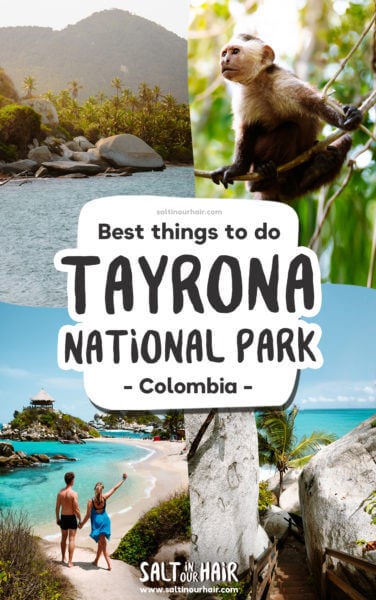
3. Explore Spectacular Beaches
Along the 3-hour Tayrona National Park walk, you’ll discover crystal blue water coves, tropical jungles, giant boulders, and gorgeous white sand beaches where you can relax for a moment on your hike. Some beaches are harder to reach than others, making them more tranquil and unspoiled. For example, Boca de Saco, which is further on than the main hotspot of Playa del Cabo.
The Best Beaches in Tayrona National Park
- Cabo San Juan del Guia: This is the most popular beach, as it’s very picturesque and suitable for swimming. It’s also a great place to camp; you can sleep in a hammock under the stars—with only the sound of the sea to send you to sleep.
- Playa Brava: This beach is also an excellent spot to camp (enter this beach from the Calabazo entrance). It feels a little wilder and more remote than the others, and the sea is normally quite rough, so avoid swimming here.
- Playa Cristal: The beach with the clearest, most beautiful water and the perfect place for snorkeling and swimming!
- Arrecifes: You can’t swim here, but it’s a gorgeous beach to relax on, with huge boulders and a lagoon.
- Castilletes and Canaveral: These are the two closest beaches to the El Zaino entrance. Both beaches are typically quiet, as people often continue to Cabo San Juan. Canaveral is also where you can find the start of the ‘9 Piedras’ walking trail.
- La Piscina: The name of this beach means ‘swimming pool’ as there are rocks surrounding it, making it look like a saltwater pool (which is also safe for swimming!).
If you’re willing to walk further, head for the less crowded and most ‘paradise’ island’ beach: Playa Cinto. It’s harder to get to but worth it when you see the vast sweeping ark of pristine white sand and beautiful hanging palm trees.
4. Join a Boat Tour
There are lots of boat tours leaving Santa Marta, Rodadero, and Taganga that will take you on a sailing excursion into the waters of Tayrona National Park. This is a great way to see the park from a different perspective, and you’ll get to experience it with a small group of other travelers. You’ll get to go swimming, snorkeling, SUP boarding, kayaking, fishing—eating your fresh catch for lunch.
Most boat tours include snacks, lunch, drinks, and a sailing round trip from your destination. However, please note that you won’t be able to explore the hiking trails within the park, so you won’t get quite the same jungle and wildlife experience.
Entrance Fee for Tayrona National Park
Tayrona National Park has different entrances and hiking routes. In order to get to any beach, you must do a little walk, some further than others!
Ticket Prices
- 87,000 COP (~21,40 USD) during the high season.
- 73,500 COP (~18,10 USD) in the low season.
You’ll also need to pay mandatory park insurance at the entrance, which costs 6,000 COP. (~1,50 USD) Additionally, you can pay for camping and accommodation at the gate.
Buying a Ticket
The ticket system for Tayrona National Park is slightly odd, with different lines for different parts of the purchase process.
- First, get in line to purchase a wristband for your national park insurance. During this time, your bag will also be checked.
- Next, you’re forwarded to the ‘reserve a ticket’ counter. Make sure to select either a day ticket or an overnight ticket if you plan to camp within the park.
- You’ll then be sent to the final counter to pay.
- Finally, you’ll be returned to the previous counter to collect your ticket. You’ll need your passport or a photo/pdf of your passport photo page on your phone to show.
Tips for Entering Tayrona National Park
- The busiest time at the main entrance of Tayrona National Park (El Zaino) is between 8 AM and 10 AM. Avoid this time if possible, and try to get there early before the park opens.
- Avoid visiting in busy periods of the year, for example, Colombian public holidays, weekends, and the busy months of June and July.
- There is a limit on how many people can enter the park each day, so arrive early to ensure you get in.
- You can pay by credit card for your tickets. However, you’ll want some cash on you to buy some food within the park.
- Every February, the park is closed. This is to give nature a chance to recover from tourism.
You can also bring your own food and drink inside the park. Please remember to leave the place better than you found it, take your trash away, and consider traveling plastic-free! To contribute to the local economy, we recommend buying fresh coconuts from the indigenous people inside the park who sell fruit to make a living.
Where to Stay in Tayrona National Park
Accommodation inside the park ranges from eco huts to camping areas. It’s a great way to extend your stay in Tayrona, allowing you to relax and enjoy the park after your long hike in the day. Plus, at night, the daytrippers leave, and you’ll potentially have the park all to yourself!
Alternatively, you could stay on the main road just outside the park and visit Tayrona multiple times over a few days. There is one large street with lots of hotels. Although you won’t find many restaurants here, most hotels have their own on-site. We stayed at Eco Lodge Chayrama and had a really lovely stay!
Accommodation options in Tayrona National Park
Camping in a Tent
Sleeping in a tent can be hot, but it’s still a great experience, and you’ll be more protected from mosquitos and flies. It’s possible to reserve a tent in Tayrona a day in advance, but you’ll need to go to the entrance to do so. If you happen to have your own tent, you can bring this into the park and camp for a much cheaper fee.
Some well-known campsite locations are:
Hammock
We recommend hiring a hammock instead! It’s much cooler, and it’s a great way to see the stars and enjoy an authentic natural experience.
Bungalows and Ecolodges
There is the option to stay inside a bungalow inside the park, like Ecohabs Bamboo Tayrona. This is a magical experience, deep within the forest, where you can listen to jungle noises. Plus, it’s comfier than a tent! You can find the most luxurious ecolodges at Canaveral beach.
How to Visit Tayrona National Park
Tayrona National Park is really easy to visit from places like Santa Marta (the closest airport) or Palomino.
The local bus, which travels between Santa Marta and Palomino, stops at both entrances to Tayrona. The bus will stop on the side of the road; you just need to wave and then ask the driver to drop you at the national park entrance.
Bus Prices
From the nearby town of Palomino, the bus will cost between 8,000 – 10,000 COP to Tayrona. If you want to travel on a bus with aircon, the prices are 15,000 COP.
From Santa Marta to the El Zaino entrance, the public bus leaves every 30 minutes and costs 7000 COP.
Tip: When you reach the entrance of Tayrona National Park, there is 1 hour of walking on a somewhat boring road before you reach the trail. Skip this and take a taxi for 5,000 COP. When you return, you’ll find motorbike taxis that will take you back to your hotel for a reasonable price.
Best Time to Visit Tayrona National Park
The rainy season is April/May and September-November. During these times, expect rain showers at any time. However, this is the lowest season, and the park will be at its quietest.
Outside of this time, avoid the months of December/January and June/July, when it’s the holidays, and many Colombian families will visit the park. The same goes for the Easter Holidays and the weekends.
Tip: A weekday during March would be the perfect time to visit Tayrona National Park. There is a slight chance of rain but it will be warm, and most importantly, quiet!
By purchasing through our links, you support us at no additional cost.
Thank you for your support. ♥️
- Find Hotels via Booking.com
- Find a Rental Car via Sunny Cars
- Find Flights to Tayrona National Park via Skyscanner
- Get a Travel Insurance via Heymondo
- Book Tours & Attractions via Viator
- Book a Bus/Train/Transfer via 12Go

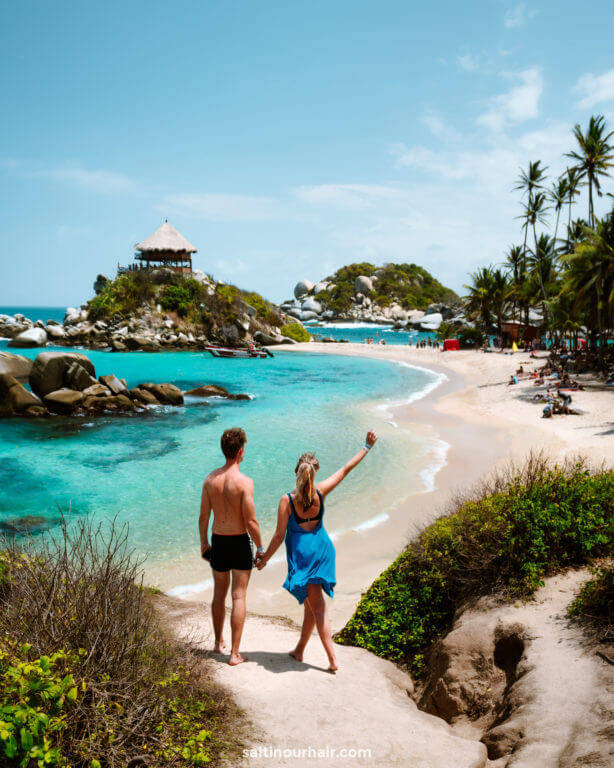
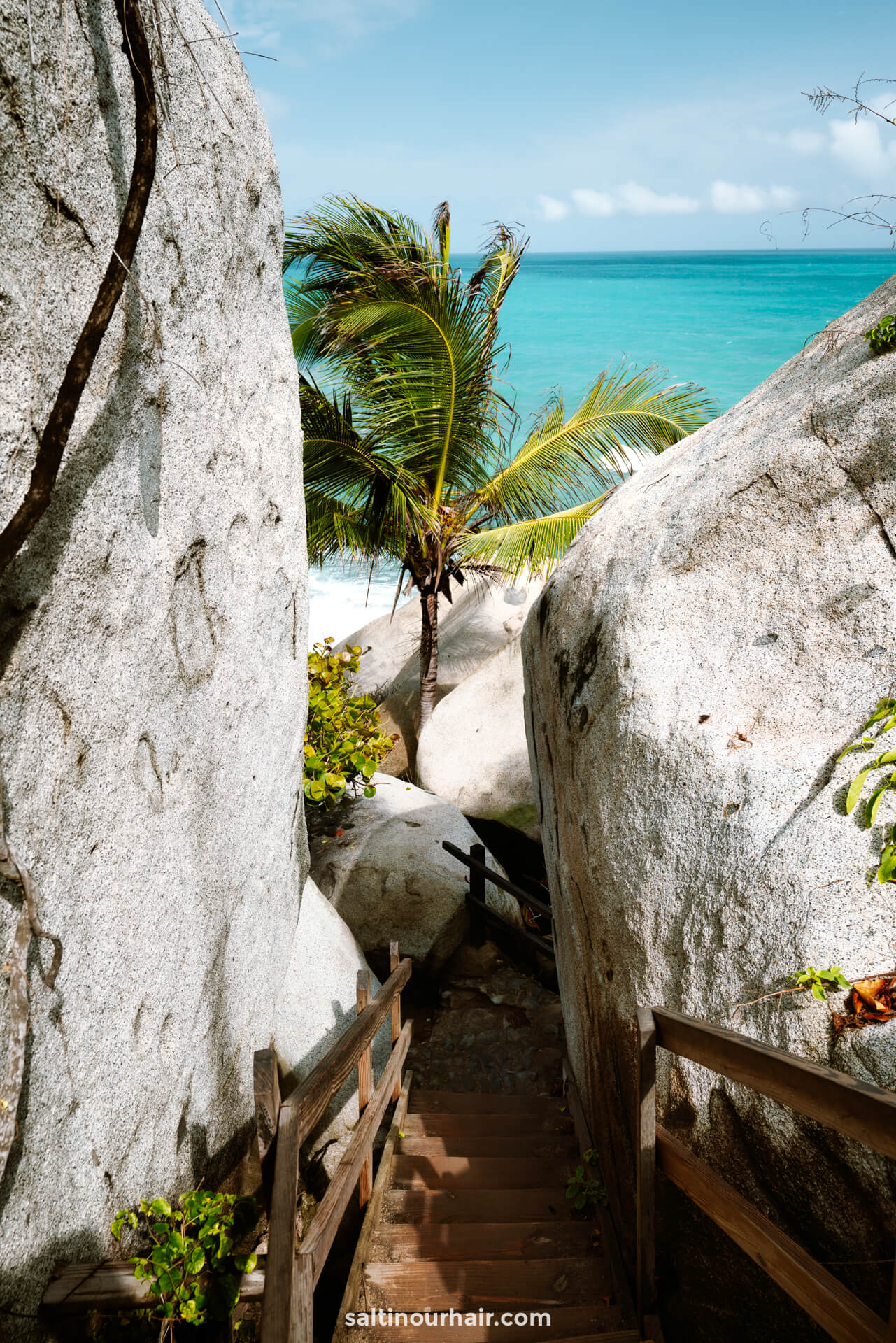

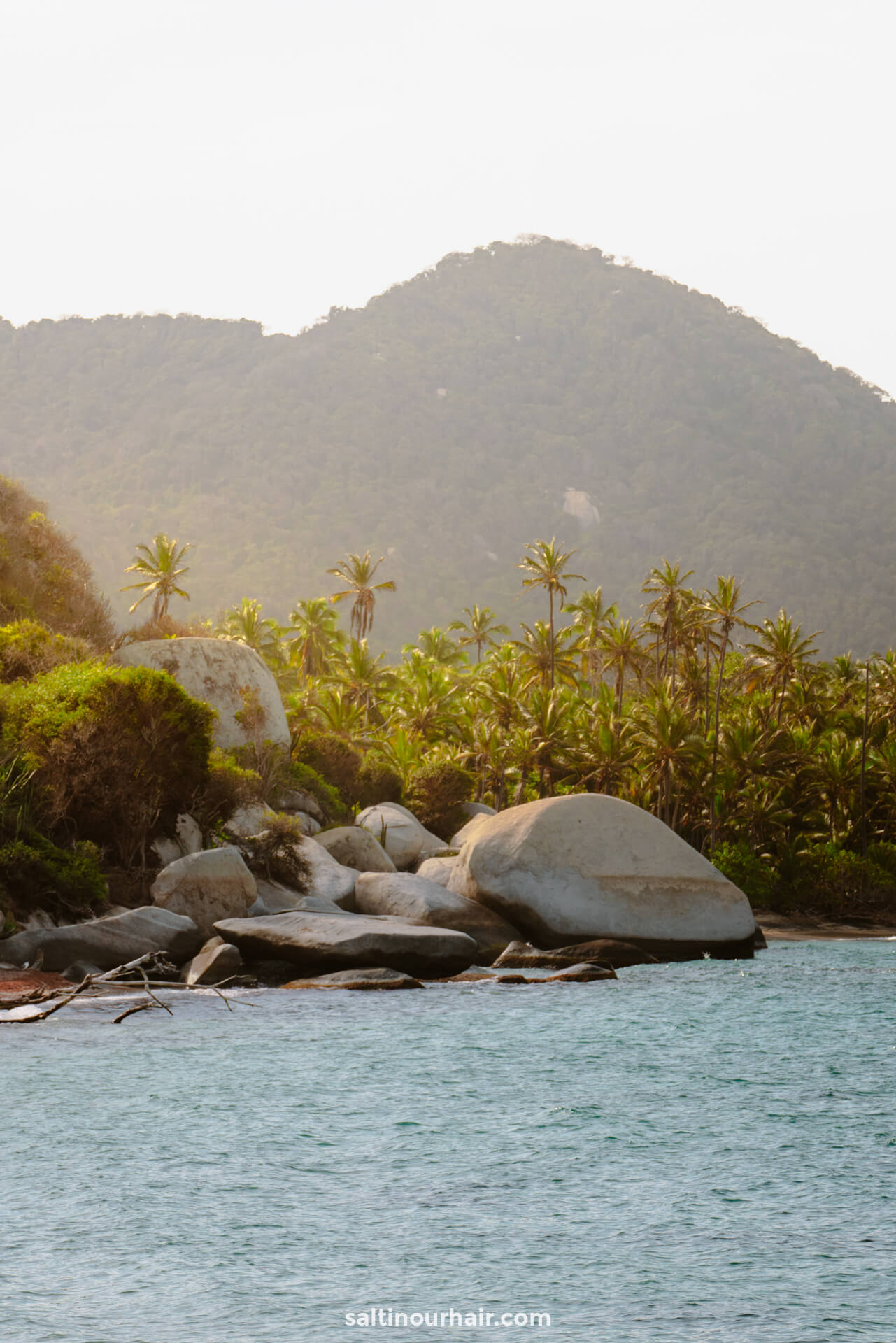
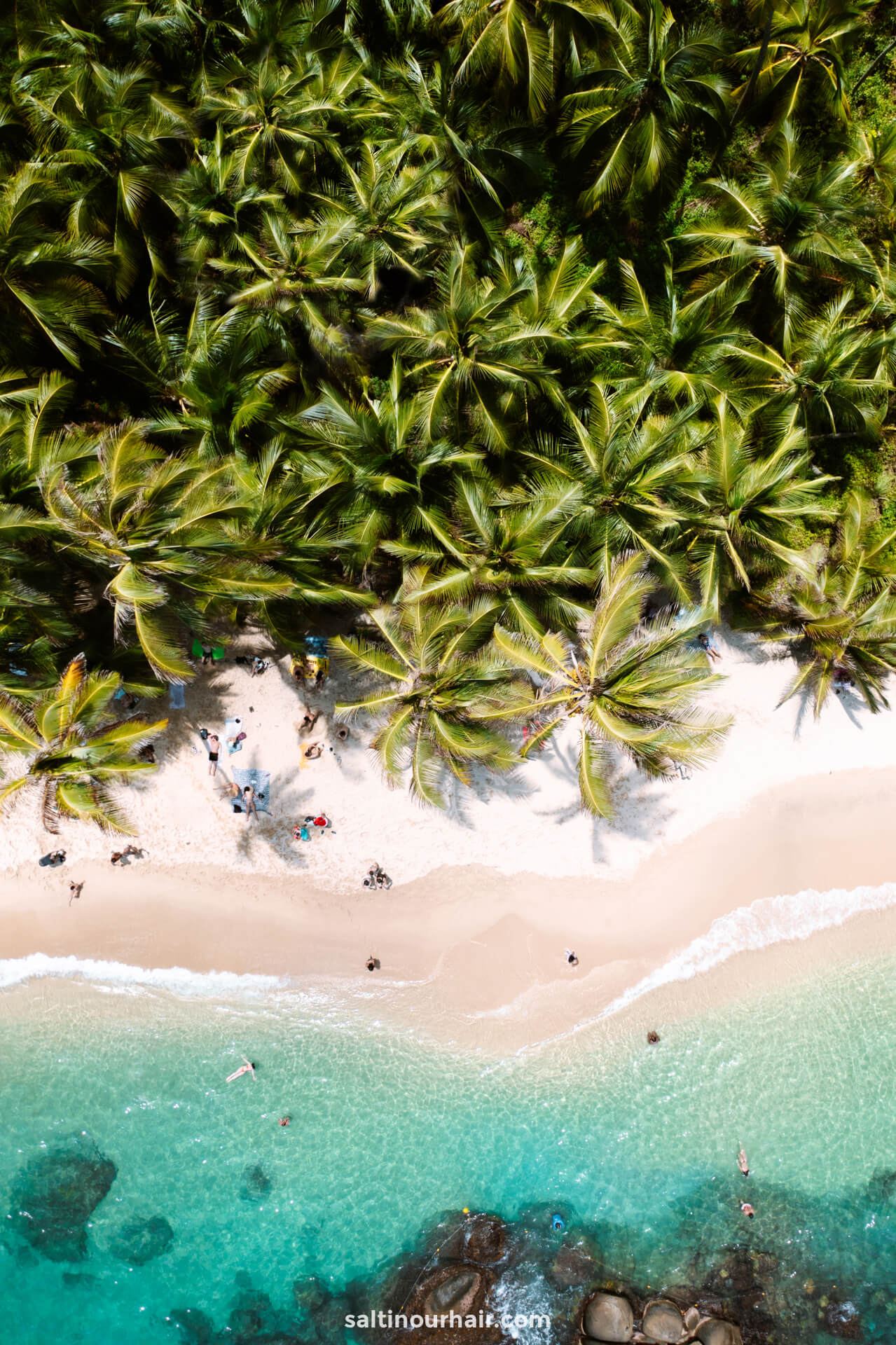

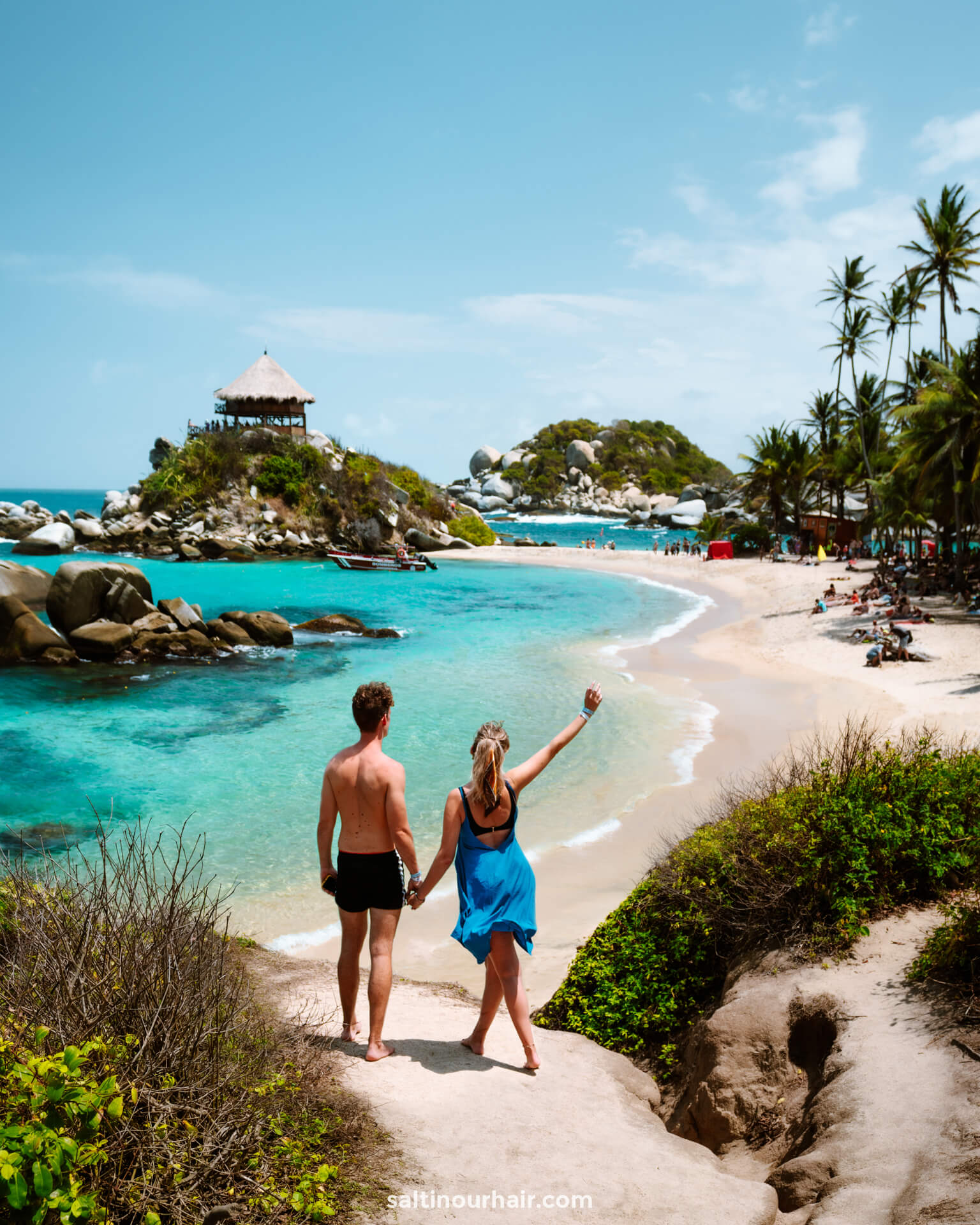
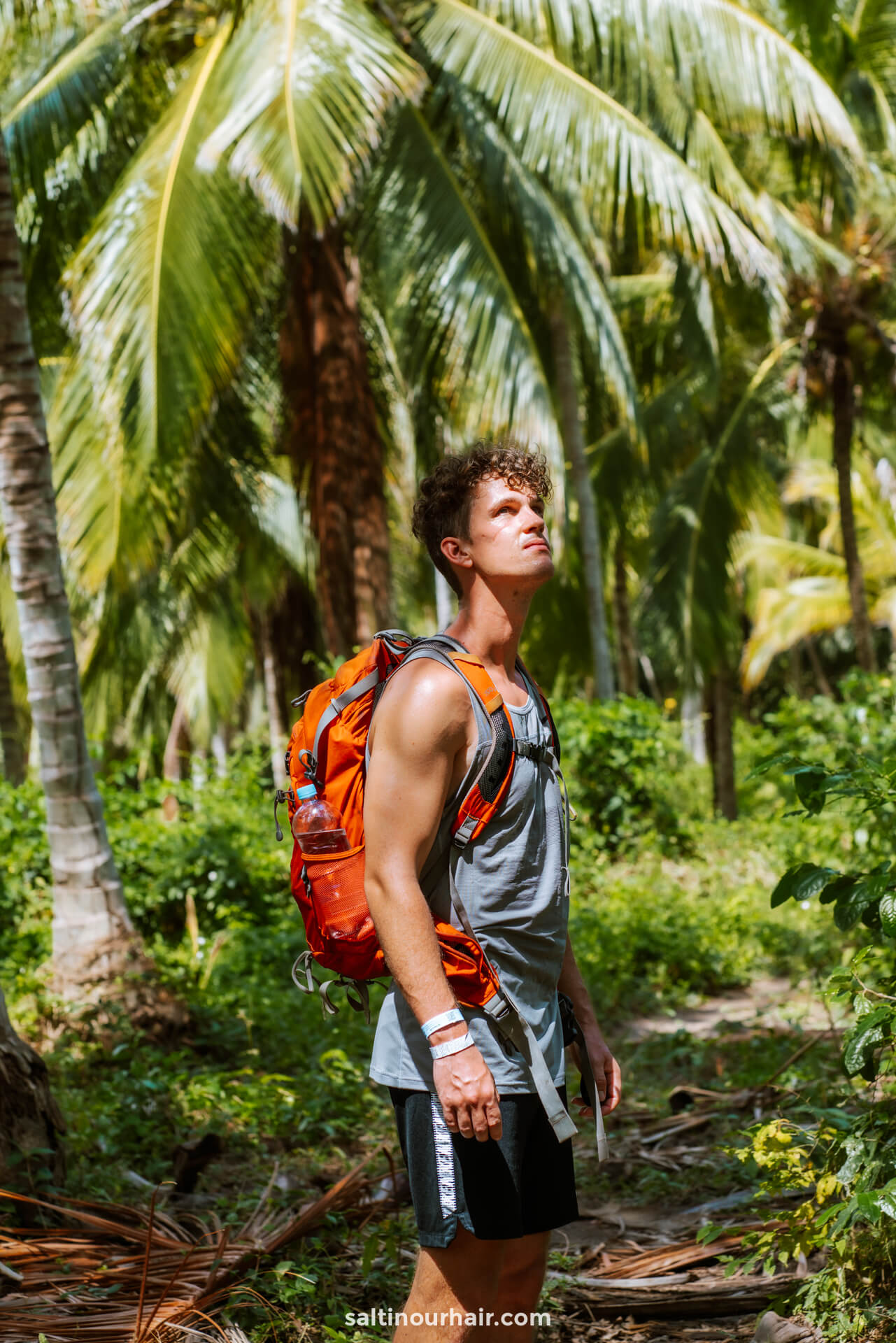
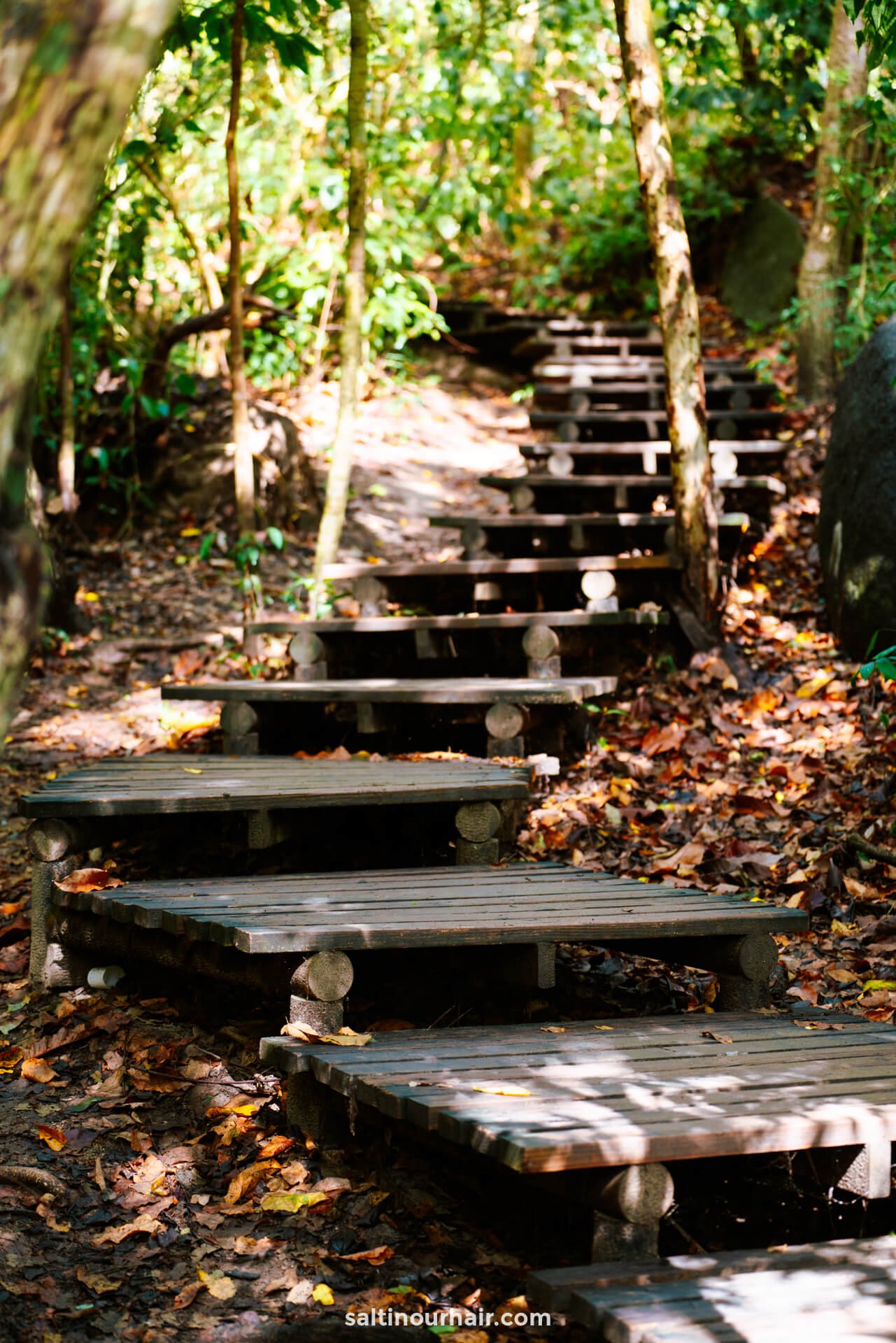
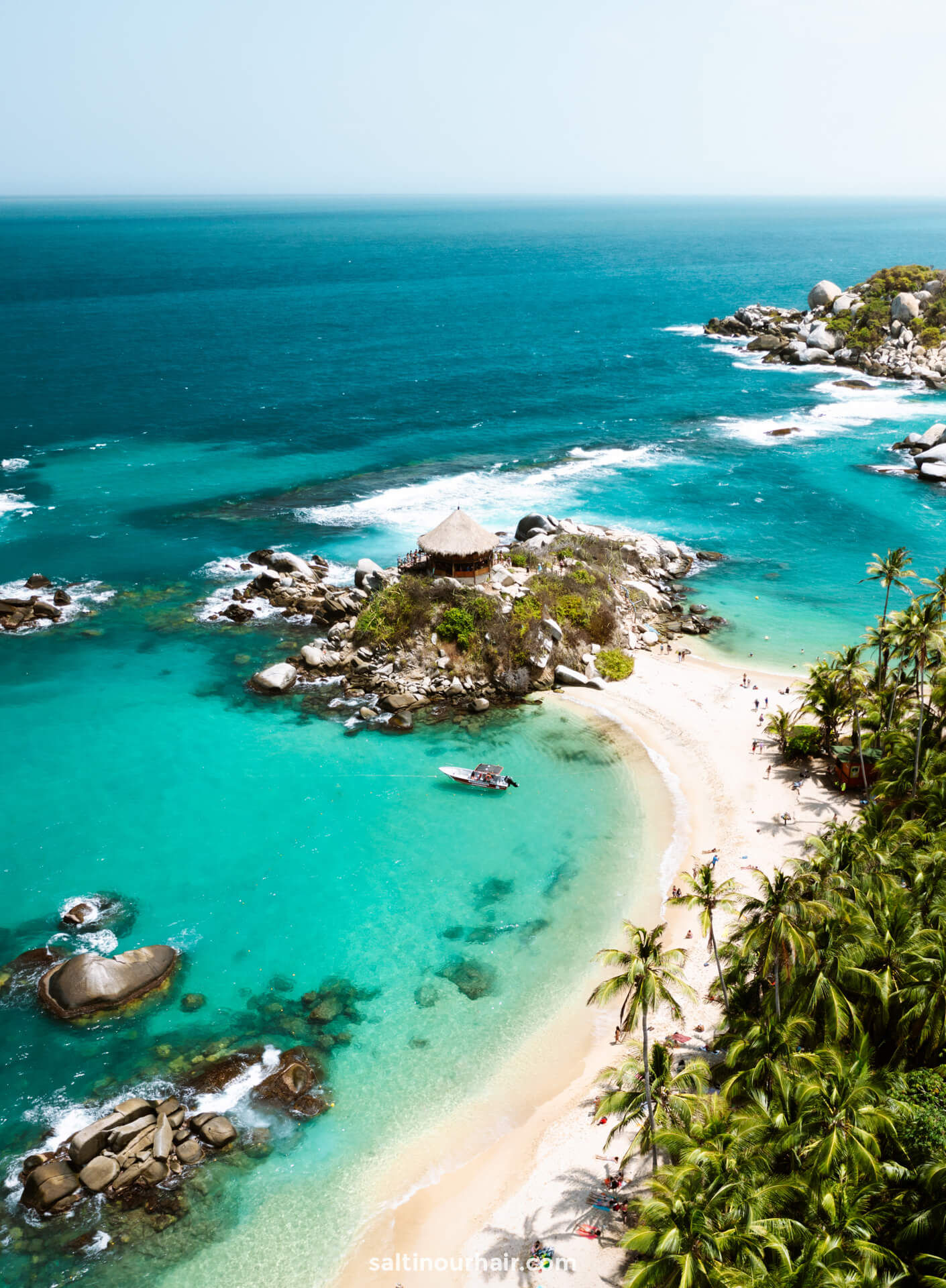
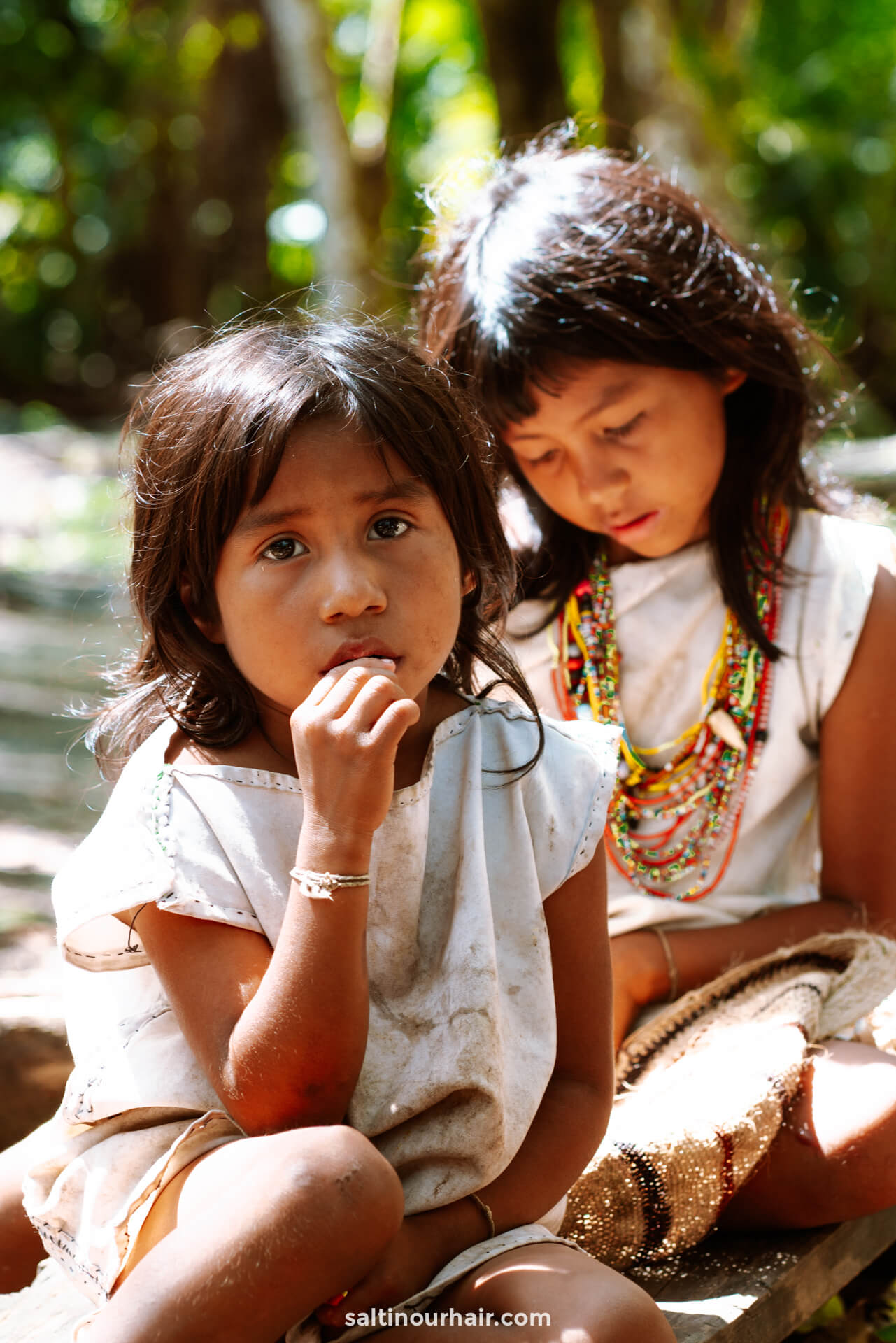
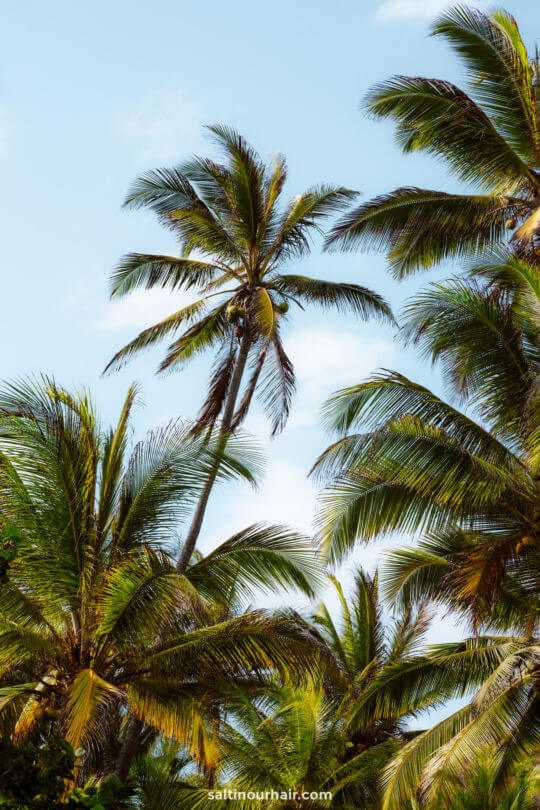
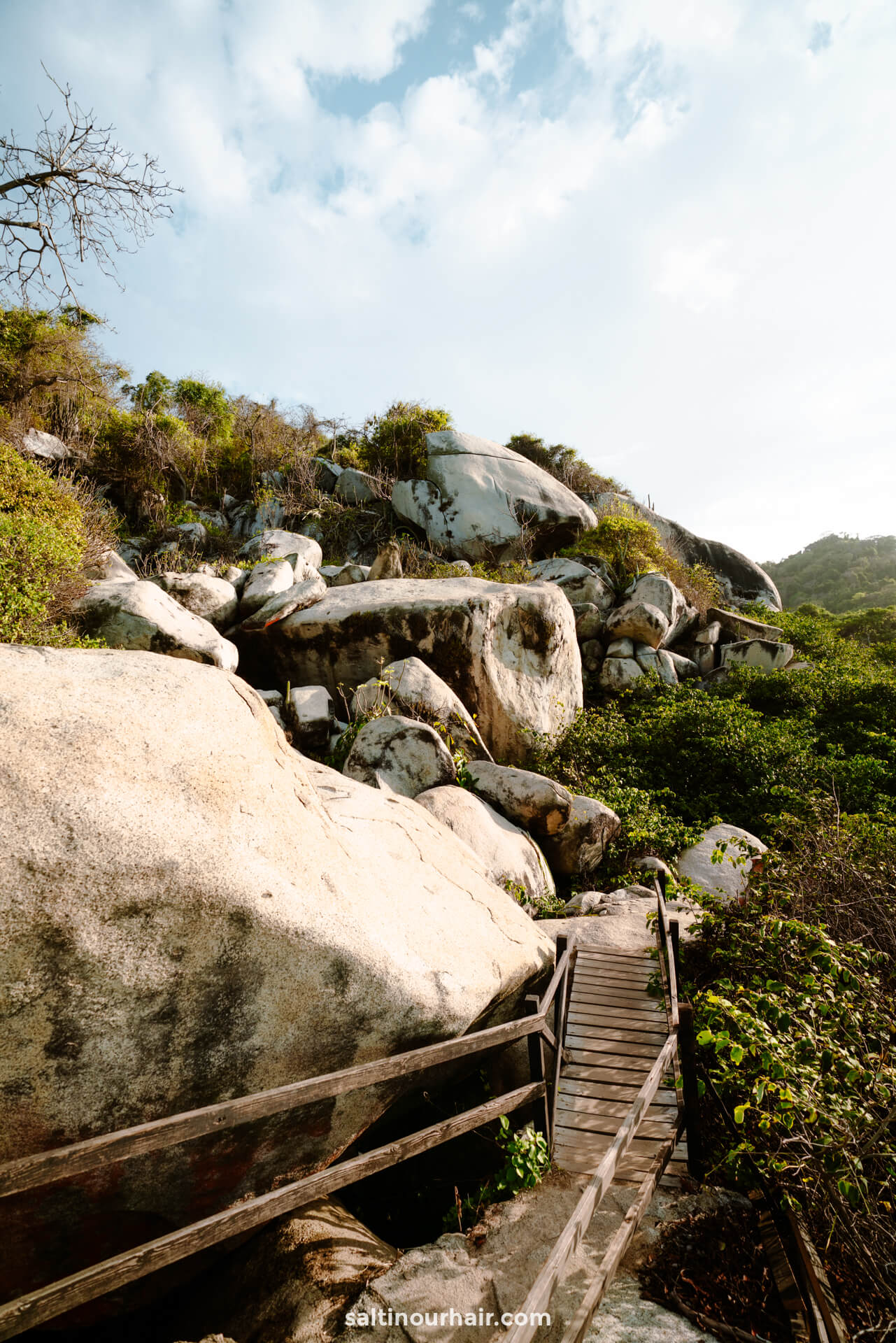
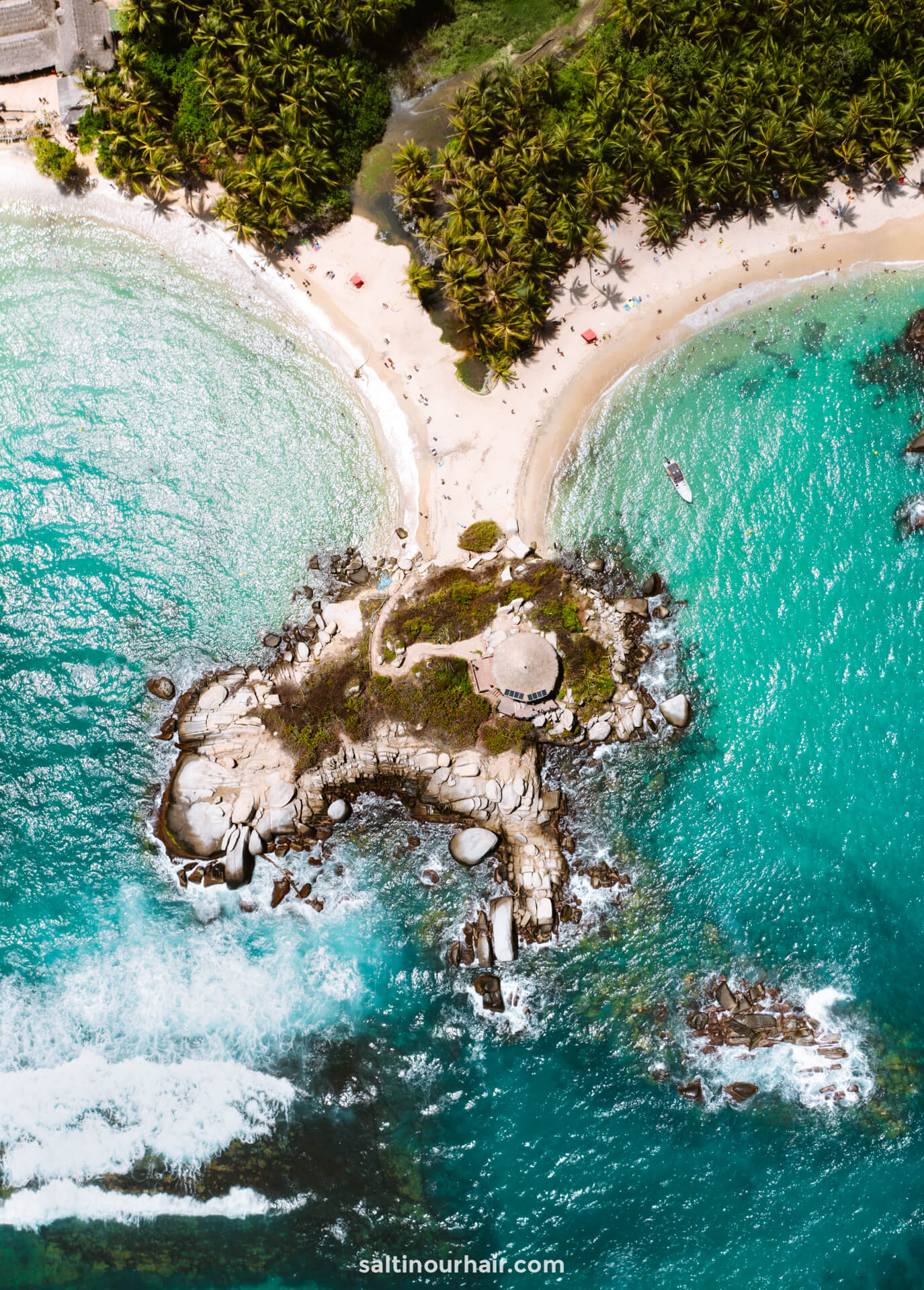


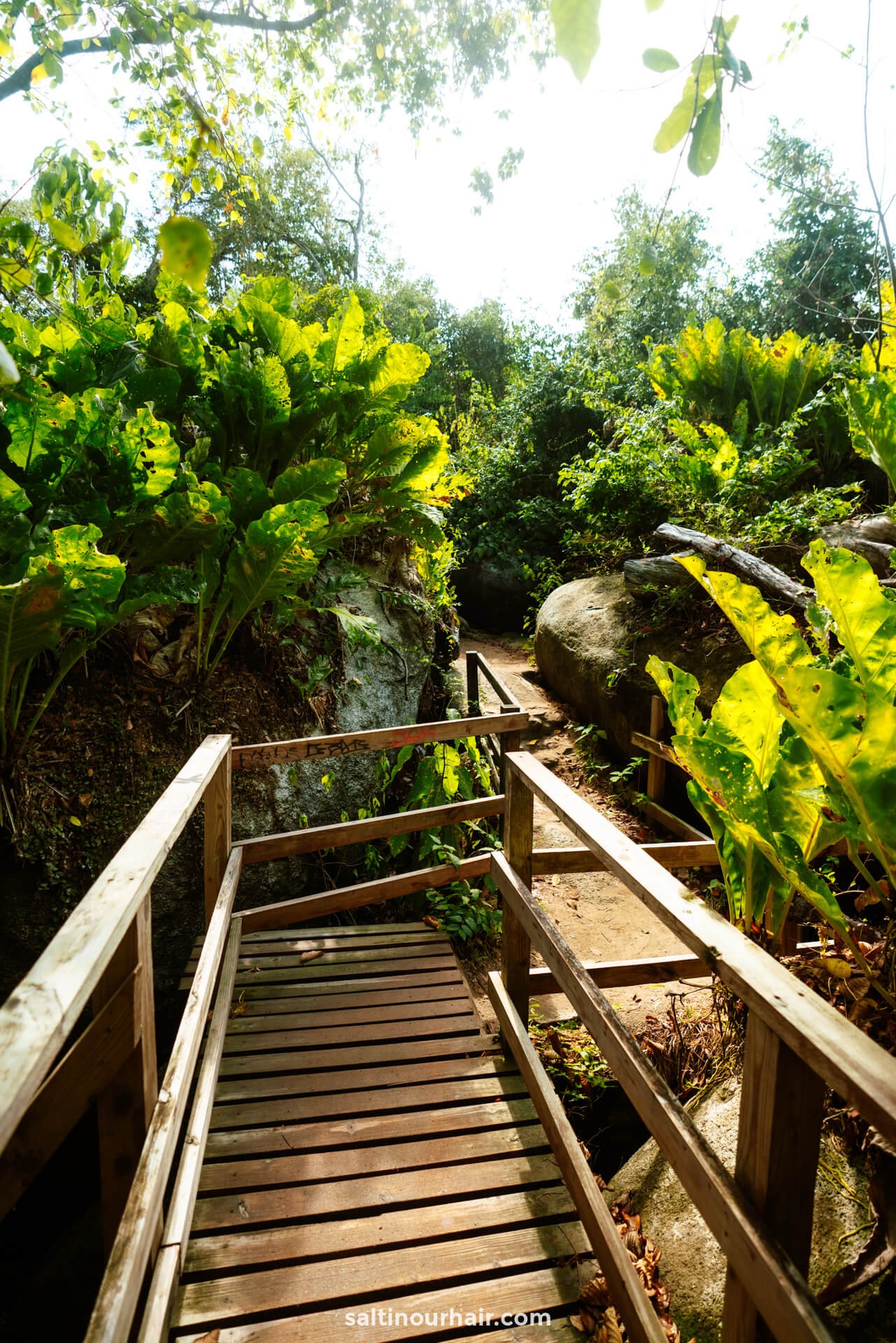
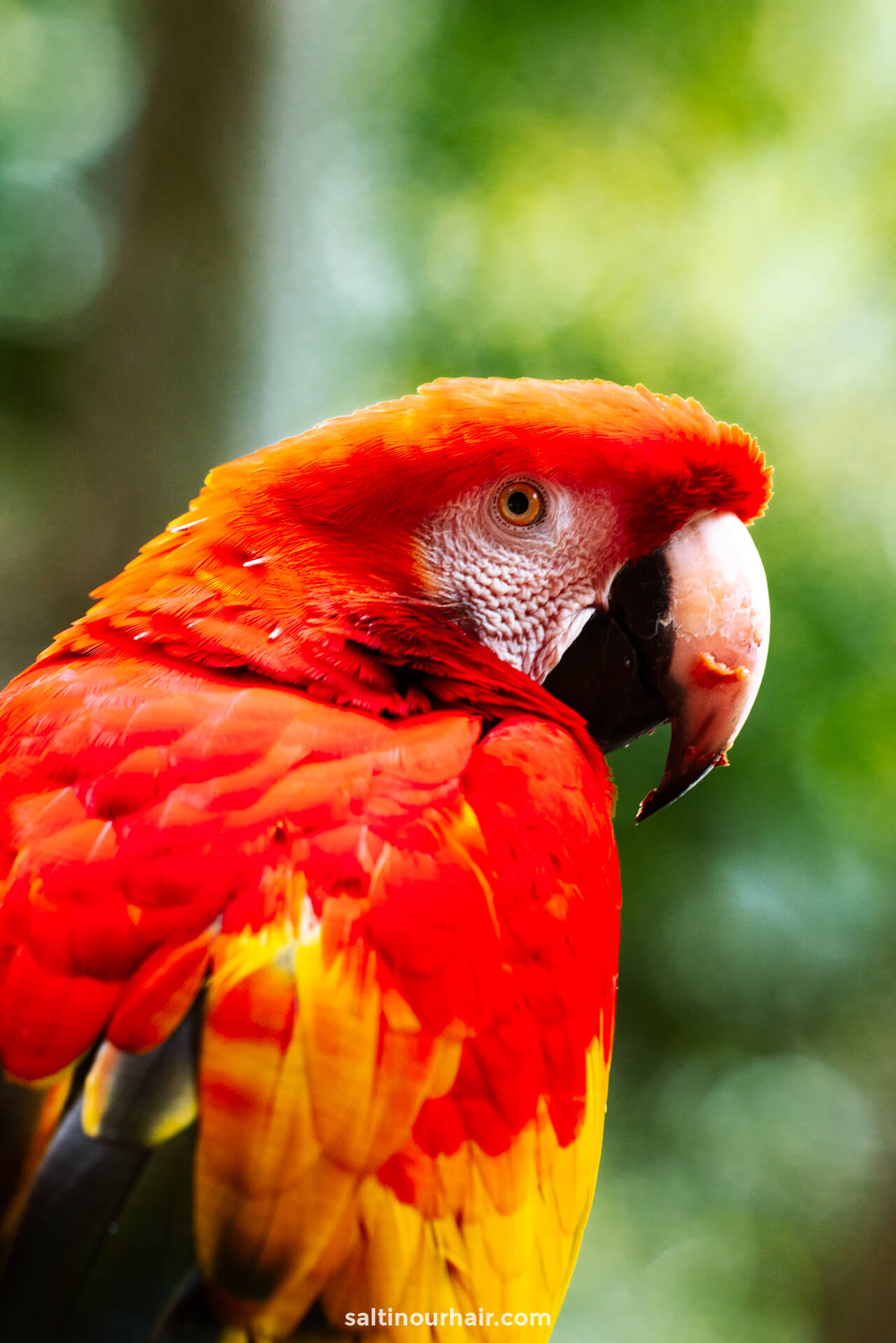
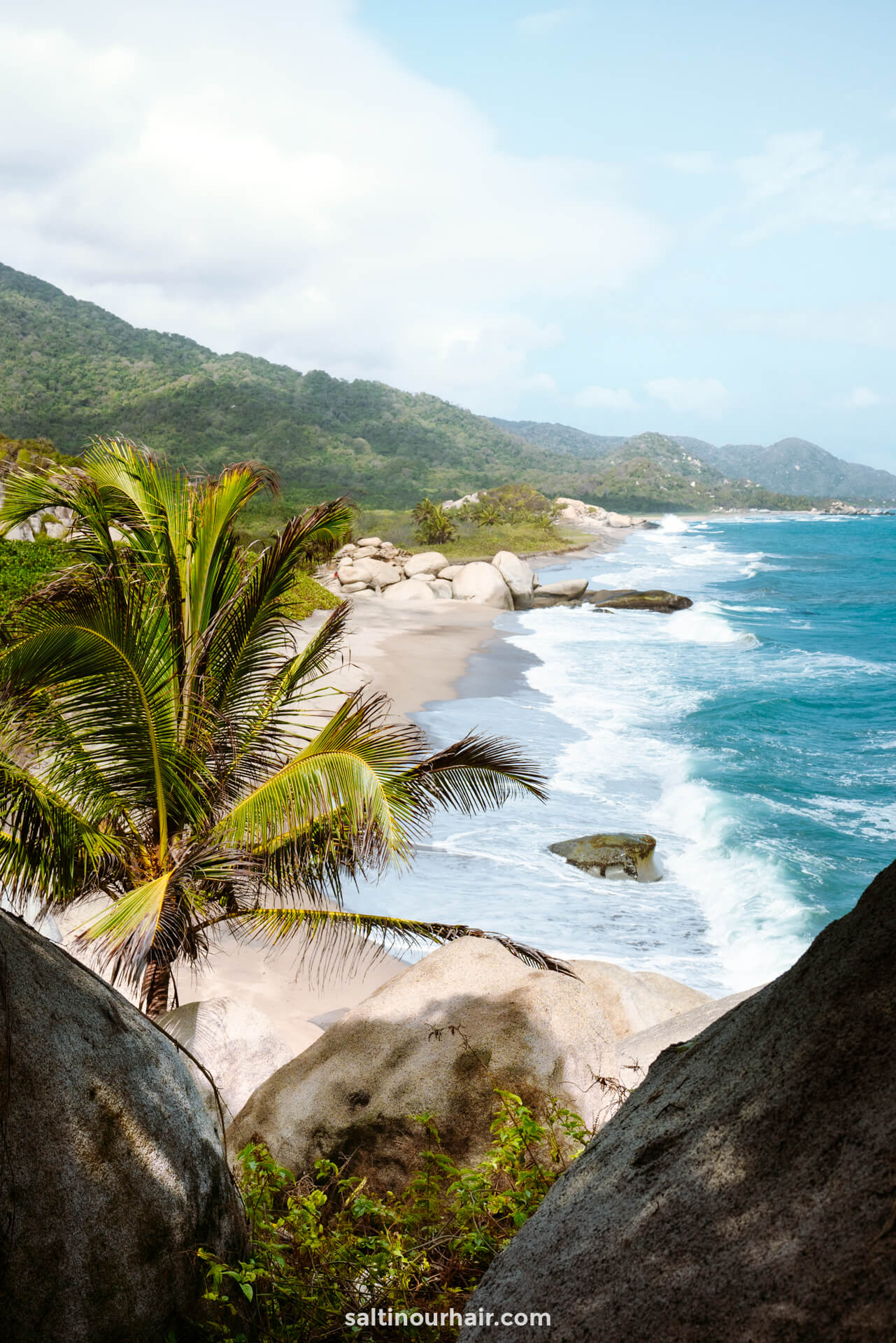
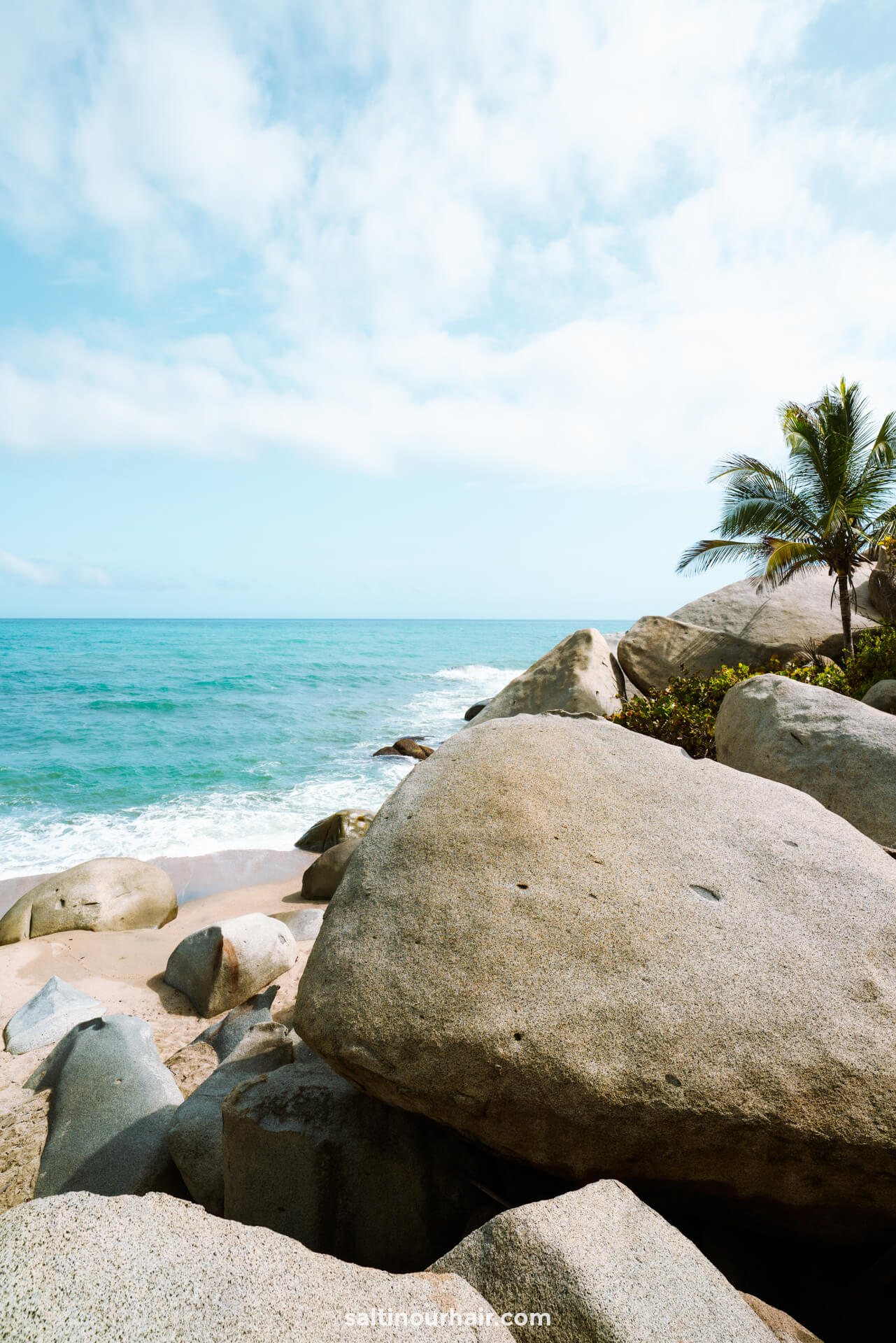
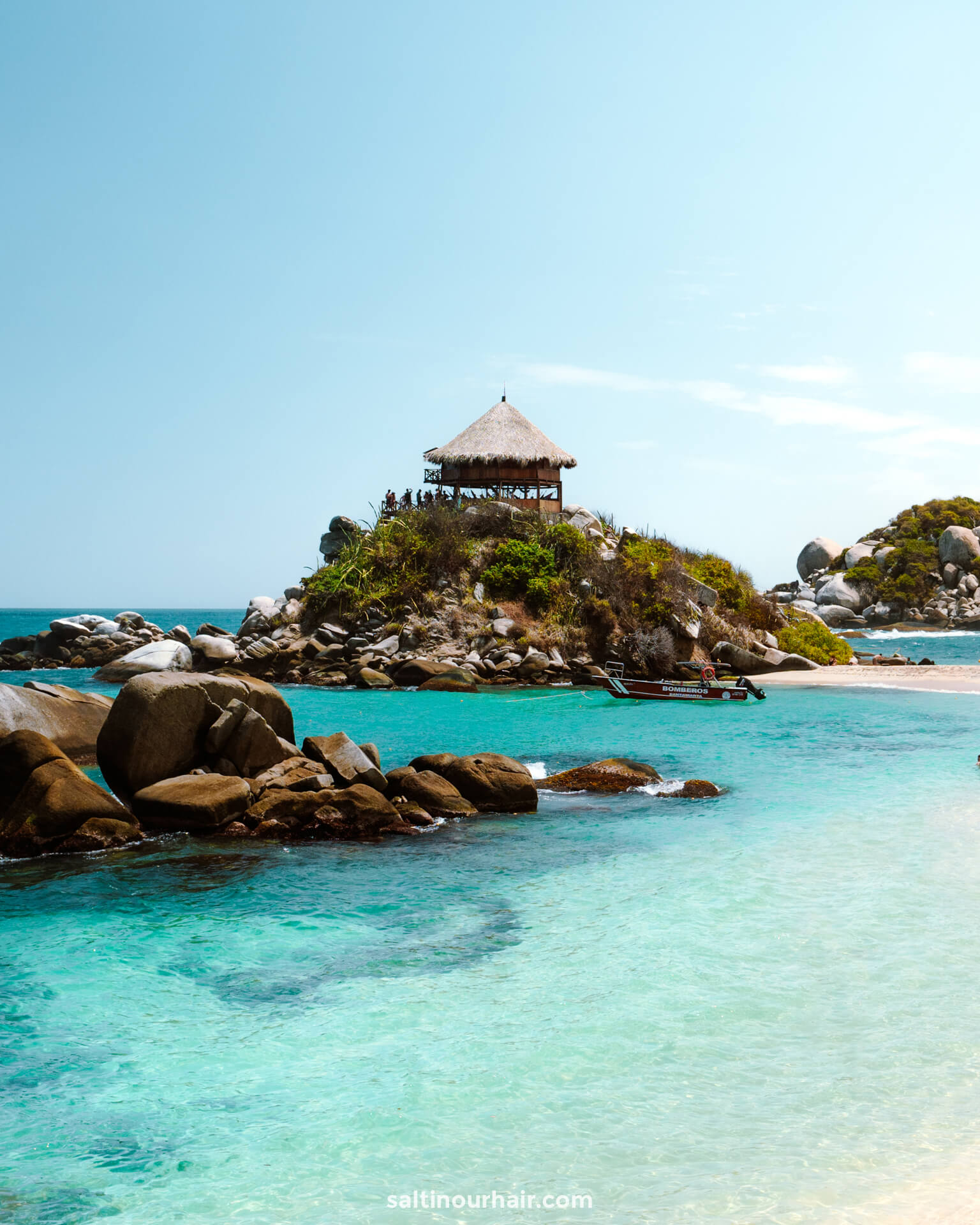
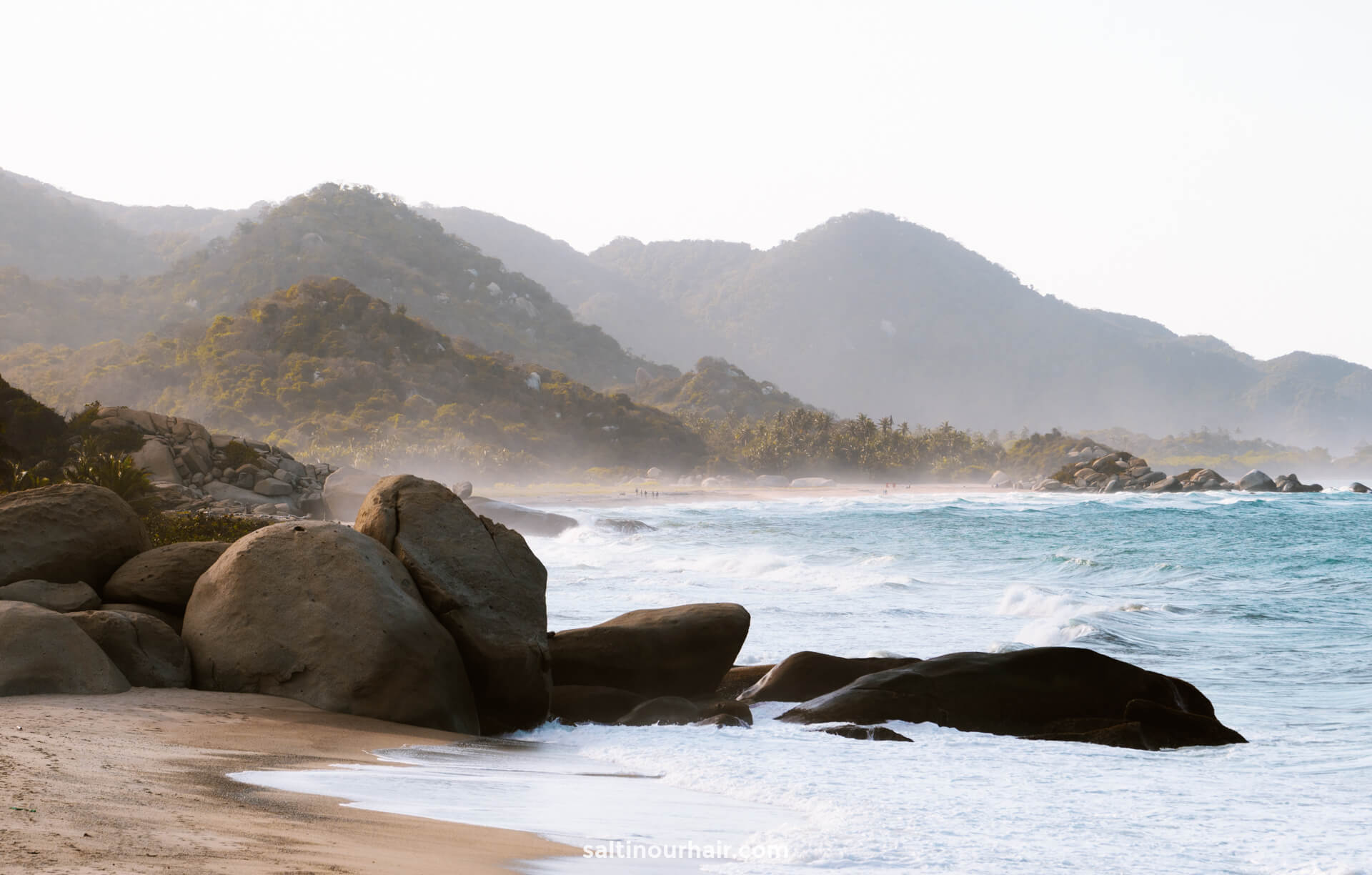
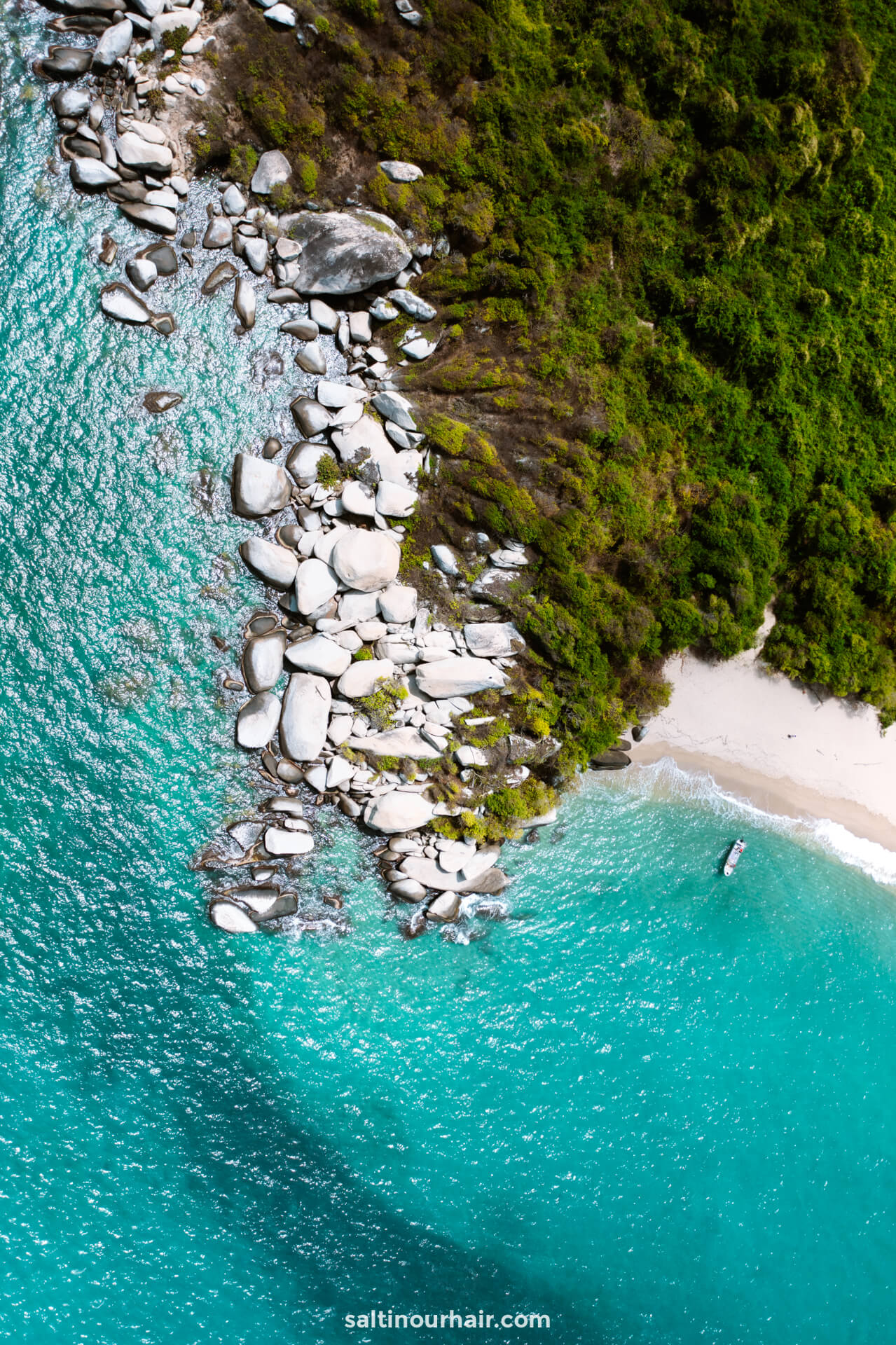
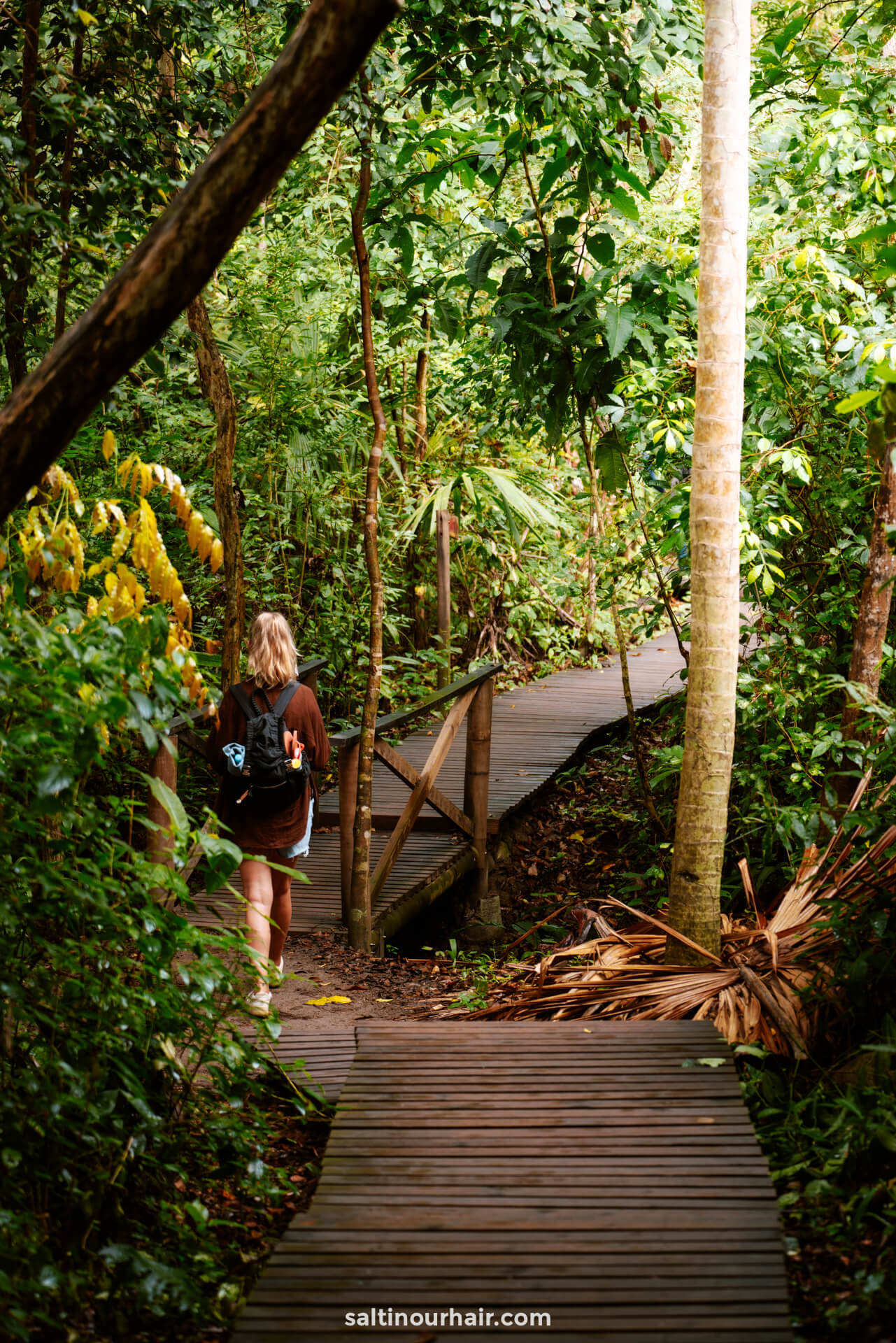
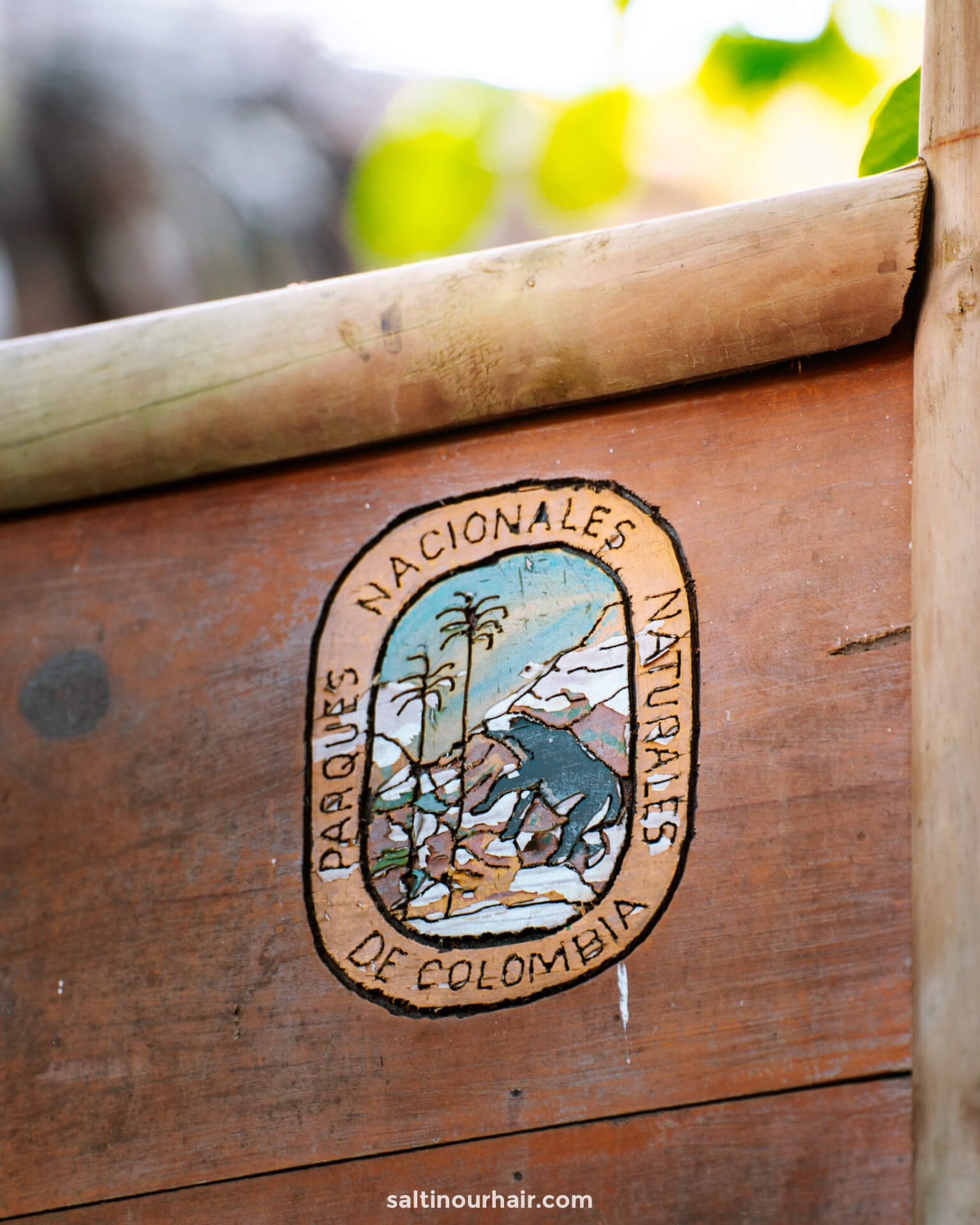
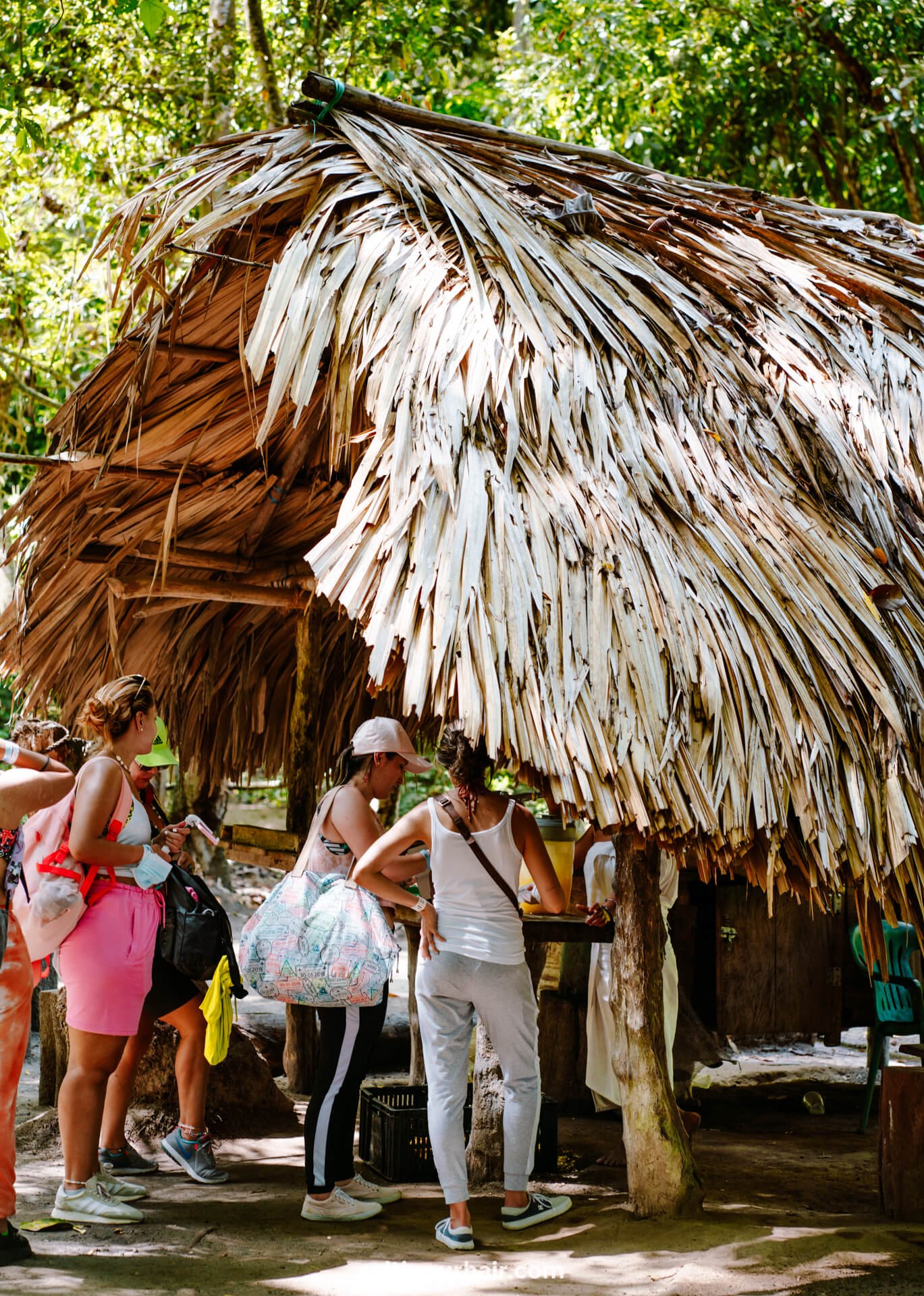
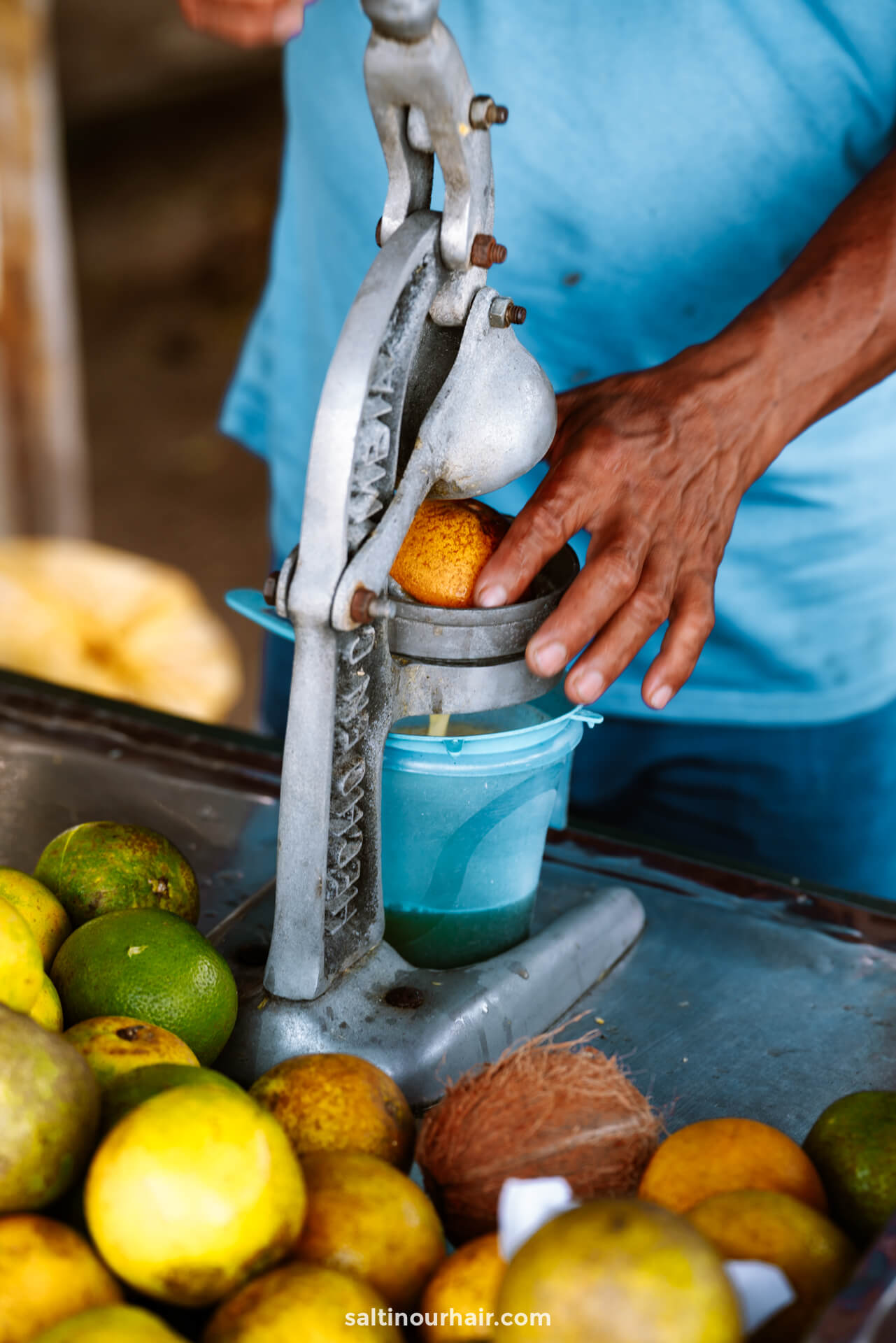
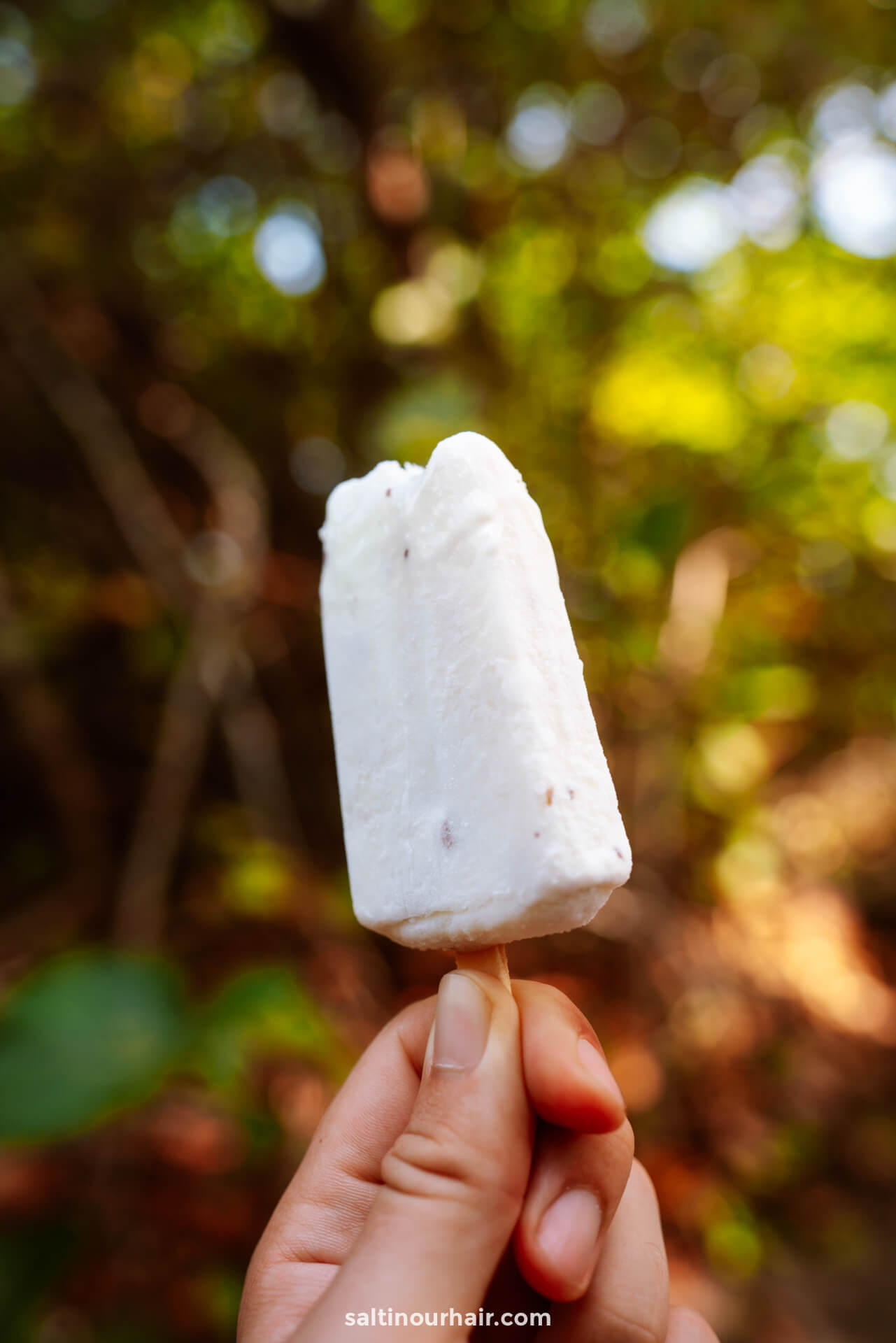
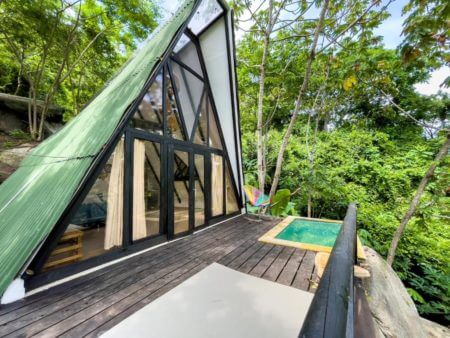
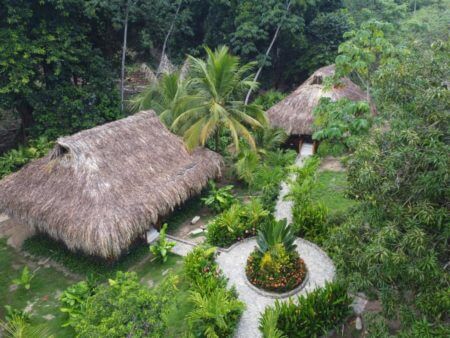
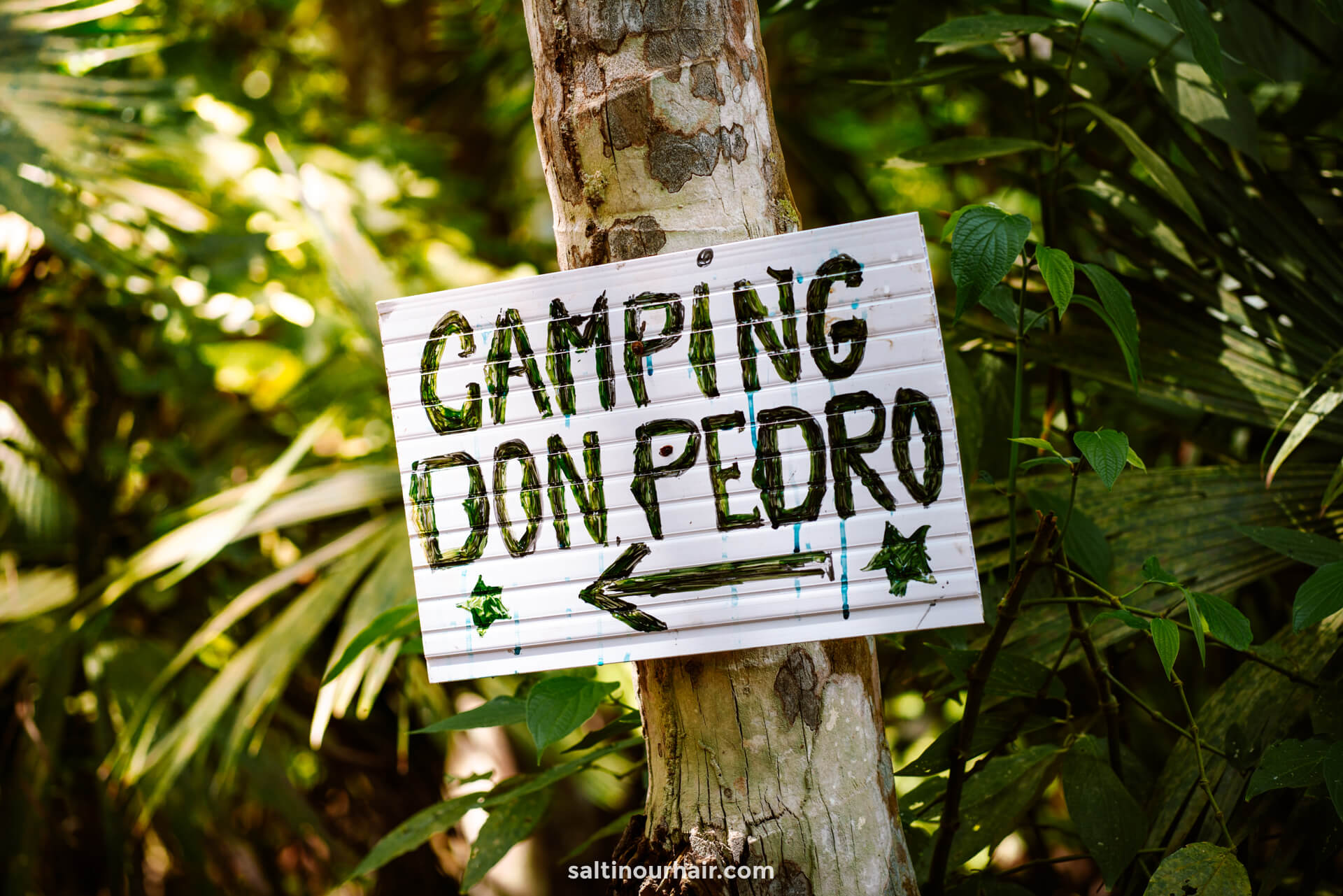
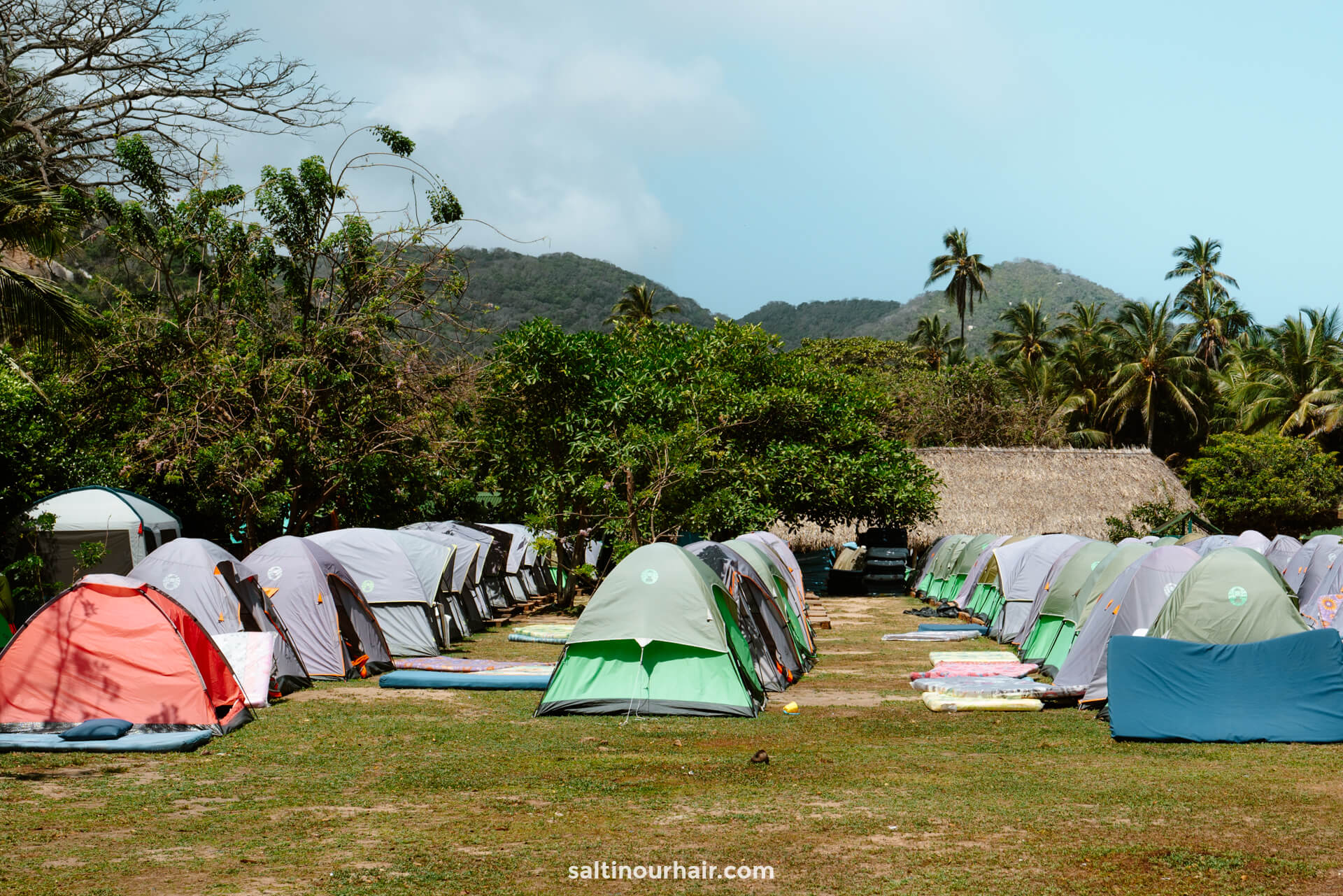



Looking for more travel information? Plan a chat with us for personalised travel advice or get an answer from the Salt in our Hair Travel Community on Facebook.